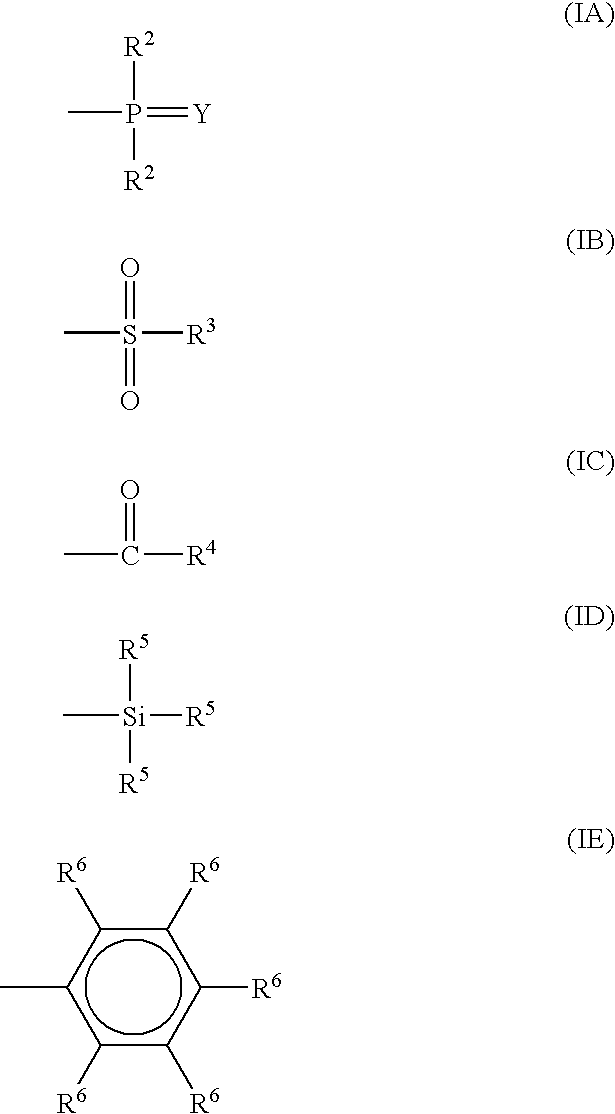Additive for nonaqueous electrolyte solution of secondary battery and nonaqueous electrolyte secondary battery
a technology of nonaqueous electrolyte and secondary battery, which is applied in the direction of non-aqueous electrolyte cells, electrochemical generators, group 5/15 element organic compounds, etc., can solve the problems of lowering the electric conductivity of the battery, quick discharge and quick charge characteristics, etc., and achieve excellent high-rate characteristics, low viscosity, and high dissolving power of the support salt
- Summary
- Abstract
- Description
- Claims
- Application Information
AI Technical Summary
Benefits of technology
Problems solved by technology
Method used
Image
Examples
examples
[0049] Using phosphazene derivatives shown in Table 1, the saturated dissolving amount of LiPF6 (support salt) and viscosity are measured. The results are shown in Table 1. In Table 1, phosphazene A is a compound shown by the following formula (A), and phosphazene B is a compound shown by the following formula (B), and phosphazene C is a compound shown by the following formula (C), and phosphazene D is a compound shown by the following formula (D), which are synthesized by the following methods.
[0050] (Synthesis of Phosphazene Derivative A)
[0051] A compound of the formulas (I), in which X is represented by the formula (IA) and all of R1s and R2s are Cl and Y is oxygen, is reacted with sodium ethoxide in a toluene solvent at a temperature of −40° C. and subjected to a molecular distillation to obtain a purified phosphazene derivative A.
[0052] (Synthesis of Phosphazene Derivative B)
[0053] Phosphorus trifluoride dichloride (PCl2F3) is reacted with diethyl phosphorylamide in the ab...
PUM
| Property | Measurement | Unit |
|---|---|---|
| melting point | aaaaa | aaaaa |
| viscosity | aaaaa | aaaaa |
| viscosity | aaaaa | aaaaa |
Abstract
Description
Claims
Application Information
 Login to View More
Login to View More - R&D
- Intellectual Property
- Life Sciences
- Materials
- Tech Scout
- Unparalleled Data Quality
- Higher Quality Content
- 60% Fewer Hallucinations
Browse by: Latest US Patents, China's latest patents, Technical Efficacy Thesaurus, Application Domain, Technology Topic, Popular Technical Reports.
© 2025 PatSnap. All rights reserved.Legal|Privacy policy|Modern Slavery Act Transparency Statement|Sitemap|About US| Contact US: help@patsnap.com



